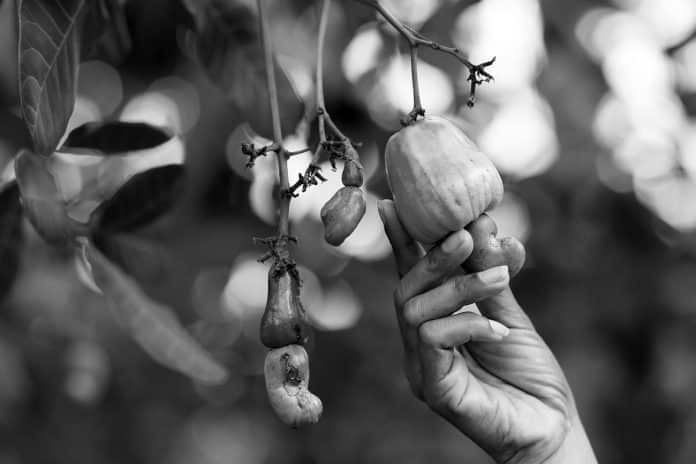The Economics Behind the Cashew Nut Boom in Tanzania: Understanding the Price Fluctuations
As the demand for cashew nuts continues to soar worldwide, Tanzania has emerged as a major player in the global market. With its ideal climate and fertile soil, the country has experienced a cashew nut boom in recent years, leading to significant economic growth. However, behind this success story lies a complex web of factors that contribute to the price fluctuations of this sought-after commodity. In this article, we will delve into the economics behind the cashew nut boom in Tanzania, exploring the key drivers of price volatility and the impact it has on local farmers, traders, and the overall economy. By understanding the intricacies of this phenomenon, we can gain valuable insights into the challenges and opportunities that arise in an industry fueled by both supply and demand dynamics. Join us as we uncover the fascinating world of cashew nuts and the economics that power their rise and fall in Tanzania.
Historical Overview of Cashew Nut Prices
The history of cashew nut price in Tanzania is one characterized by volatility and fluctuation. In the early years of cashew nut cultivation, Tanzania cashew nut price was relatively stable, with moderate increases in tandem with global demand. However, in recent decades, the market has experienced significant price swings, often driven by external factors such as changes in global supply and demand, as well as domestic policies and interventions.
One notable period of price volatility occurred in the 1970s when the global cashew nut market experienced a boom, leading to a surge in prices. This boom was fueled by increased demand from emerging economies and a shortage of supply from other major cashew nut-producing countries. As a result, Tanzania, with its favorable climate for cashew nut cultivation, enjoyed a period of prosperity as prices reached record highs.
However, this boom was short-lived, as the price of cashew nuts in Tanzania eventually plummeted due to oversupply and increased competition from other cashew nut-producing countries. This led to a period of decline in the Tanzanian cashew nut industry, with many farmers struggling to make ends meet. The subsequent decades witnessed a cycle of price fluctuations, with occasional spikes in prices during periods of high global demand, followed by subsequent drops as supply caught up.
Factors Influencing Cashew Nut Prices
Several factors influence the price fluctuations of cashew nuts in Tanzania. The primary driver is the interplay between supply and demand dynamics. When global demand for cashew nuts outstrips supply, prices tend to rise, incentivizing farmers to increase production. Conversely, when supply exceeds demand, prices fall, often leaving farmers with lower incomes.
Other factors that impact cashew nut prices include weather conditions, as changes in climate can affect crop yields. Prolonged droughts or excessive rainfall can lead to lower production, reducing supply and driving up prices. Additionally, government interventions and policies, both domestic and international, can have a significant impact on cashew nut prices. Export restrictions, import tariffs, and subsidies can all influence the supply and demand dynamics, often leading to price fluctuations.
Supply and Demand Dynamics in the Cashew Nut Market
The cashew nut market is highly influenced by supply and demand dynamics. With the increasing popularity of cashew nuts as a healthy snack and ingredient, global demand has been on the rise. This demand is driven by both the domestic market and international trade, with countries like the United States, Europe, and India being major consumers.
Tanzania, with its favorable climate and abundant land suitable for cashew nut cultivation, has positioned itself as a key supplier in the global market. As demand increases, farmers are motivated to expand their cashew nut plantations to capitalize on the lucrative prices. This leads to an increase in supply, which can eventually lead to a drop in prices if demand does not keep pace.
Conversely, if global demand surpasses supply, prices can skyrocket, providing a windfall for Tanzanian farmers and traders. In recent years, the cashew nut boom in Tanzania has been fueled by such spikes in demand, leading to a surge in prices and increased incomes for cashew nut farmers.
Government Interventions and Policies Affecting Cashew Nut Prices

Government interventions and policies play a crucial role in shaping the cashew nut industry in Tanzania and, consequently, the prices of cashew nuts. The Tanzanian government has implemented various measures to regulate the cashew nut market, with the aim of protecting the interests of local farmers and ensuring a stable income for them.
One such measure is the establishment of the Cashewnut Board of Tanzania (CBT), which acts as the regulatory body overseeing the production, marketing, and pricing of cashew nuts. The CBT sets minimum prices for cashew nuts, ensuring that farmers receive fair compensation for their produce. This intervention helps stabilize prices and provides a safety net for farmers during periods of price volatility.
Additionally, the government has implemented export restrictions and levies to promote local processing and value addition. By discouraging the export of raw cashew nuts and encouraging local processing, the government aims to create more job opportunities and increase the domestic value of cashew nuts. However, these policies can also impact prices, as restrictions on exports can lead to oversupply in the domestic market and depress prices.
Impact of International Trade and Global Market Trends on Cashew Nut Prices
The cashew nut industry in Tanzania is not isolated from the global market trends and international trade dynamics. Changes in global supply and demand, as well as shifts in consumer preferences, can have a significant impact on cashew nut prices.
One trend that has influenced the cashew nut market in recent years is the increasing demand for organic and sustainably sourced products. Consumers are becoming more conscious of the environmental and social impact of their purchasing decisions, leading to a growing demand for ethically produced cashew nuts. This trend has presented both opportunities and challenges for Tanzanian cashew nut farmers, as meeting the requirements for organic certification can result in higher prices, but also requires adherence to specific production practices.
Furthermore, fluctuations in exchange rates can affect the competitiveness of Tanzanian cashew nuts in the global market. A stronger Tanzanian shilling can make exports more expensive, potentially reducing demand and impacting prices. On the other hand, a weaker shilling can make exports more affordable, stimulating demand and driving up prices.
Challenges and Opportunities for Cashew Nut Farmers and Processors
While the cashew nut boom in Tanzania has brought economic benefits to the country, it also poses challenges for farmers and processors. Price volatility can make it difficult for farmers to plan their production and manage their finances effectively. A sudden drop in prices can lead to financial hardship, especially for small-scale farmers who depend heavily on cashew nut income.
Additionally, the lack of infrastructure and processing facilities poses challenges for cashew nut processors in Tanzania. The majority of cashew nuts are exported in raw form, resulting in missed opportunities for value addition and higher profits. Investing in processing facilities and improving processing capabilities can create more jobs and increase the value of Tanzanian cashew nuts in the global market.
However, these challenges also present opportunities for innovation and growth. Diversification into value-added products such as cashew butter, cashew milk, and roasted cashew snacks can help farmers and processors capture additional value from their cashew nut production. Moreover, improving infrastructure, logistics, and market linkages can enhance the competitiveness of Tanzanian cashew nuts in the global market and open up new export opportunities.
Strategies for Managing Price Fluctuations in the Cashew Nut Industry
Managing price fluctuations in the cashew nut industry requires a multifaceted approach that considers both short-term and long-term strategies. One short-term strategy is for farmers and traders to engage in collective bargaining and form cooperatives. By pooling their resources and negotiating as a group, farmers can have more influence over prices and secure better deals with buyers.
Another strategy is for farmers to diversify their income sources and not solely rely on cashew nut production. This can help mitigate the risks associated with price volatility and provide alternative sources of revenue during periods of low prices.
Long-term strategies involve investing in research and development to improve cashew nut varieties, increase yields, and enhance the overall productivity of cashew nut plantations. Additionally, investing in technology and adopting best practices in farming, processing, and marketing can help reduce costs and improve efficiency, making the industry more resilient to price fluctuations.
Future Prospects and Potential for the Cashew Nut Industry in Tanzania
The future prospects for the cashew nut industry in Tanzania are promising, given the increasing global demand for cashew nuts and the country’s favorable conditions for cultivation. However, realizing this potential requires addressing the challenges and seizing the opportunities presented by the industry.
Investments in infrastructure, processing facilities, and market linkages are crucial for unlocking the full potential of the Tanzanian cashew nut industry. Improving access to finance and providing technical assistance to farmers and processors can also support the growth of the industry and enhance its competitiveness in the global market.
Furthermore, strengthening partnerships between the government, private sector, and international organizations can create a conducive environment for growth and innovation in the cashew nut sector. Collaboration in research and development, capacity building, and market development can help Tanzania establish a sustainable and thriving cashew nut industry that benefits all stakeholders.
Conclusion
The cashew nut boom in Tanzania is a testament to the country’s agricultural potential and the global demand for this sought-after commodity. However, the economics behind the cashew nut industry are complex, with price fluctuations influenced by a myriad of factors, including supply and demand dynamics, government interventions, global market trends, and challenges faced by farmers and processors.
Understanding the intricacies of the cashew nut market is crucial for stakeholders in Tanzania to navigate the challenges and seize the opportunities presented by the industry. By implementing strategies to manage price fluctuations, investing in infrastructure and technology, and fostering collaboration between various stakeholders, Tanzania can harness the full potential of its cashew nut industry and contribute to its sustainable economic growth. As the world continues to savor the taste of cashew nuts, Tanzania has an opportunity to solidify its position as a key player in this thriving market.
For more Cash Crops in Tanzania articles click here!


































